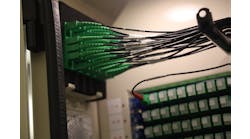Microgrids and energy storage improve electric reliability. So it was perplexing to see how little attention they received in a major study on grid reliability issued this week by the U.S. Department of Energy.
Businesses, communities and institutions across the country have stepped up installation of microgrids in recent years to ensure power supply when the central grid fails. Since Superstorm Sandy, states have dedicated at least $200 million for microgrid installations. And in 2016, alone, utilities put up at least $1.2 billion to pursue microgrids and related distributed energy.
Yet the federal government mentioned microgrids only twice – and briefly – in its 181-page”Staff Report to the Secretary on Electricity Markets and Reliability.” Energy storage did a bit better with three paragraphs and a chart.
Steve Pullins, Hitachi
“This is supposed to be a reliability report, but it focuses on generation and transmission,” said Steve Pullins, vice president for energy solutions at Hitachi America. “With 90 percent of the events that lead to a customer outage initiating in the distribution network, only 10 percent of those events have anything to do with generation and transmission. So why does the report focus > 90 percent of its attention on the 10 percent problem?”
He added: “As far as I am concerned, this report is only 10 percent relevant to reliability. I am greatly disappointed. This will be in my book on ‘Missing the Point.’”
“…this report is only 10 percent relevant to reliability.” — Steve Pullins, Hitachi
But does the study open doors?
Microgrids may have been undervalued because of the impetus for the study. The report sprang from concern by US Energy Secretary Rick Perry about the rise of renewables and the decline in coal-fired generation. So its focus was bulk power markets. Some saw the study as an excuse to boost the Trump administration’s pro-coal agenda. If any microgrids in the U.S. use coal, they are unusual.
Yet there is a silver lining – one the report authors may or may not have known they were stitching.
Despite the report’s apparent lack of attention to microgrids, some of its recommendations could advance the technology, especially where it is paired with energy storage.
Kelly Speakes-Backman, ESA
“I don’t know if their intent was to open the door for modern energy resources, but in actuality that is what they did,” said Kelly Speakes-Backman, CEO of the Energy Storage Association. “When you are talking about resilience, versatility, reliability and flexibility — that is exactly what energy storage and microgrids provide.”
Among its recommendations, the report calls on the Federal Energy Regulatory Commission to study how to value and compensate services that offer grid reliability. Microgrids and energy storage make the grid more reliable, yet they are not paid for doing this. Advocates of the technologies frequently point out this lack of compensation and call for market reforms.
The Trump administration may have inserted the compensation language solely for the benefit of coal, as it searches for reasons to give the fuel an economic boost. So how the recommendation plays out on practical level remains to be seen.
Oddly, if FERC changes rules to compensate reliability, microgrids and energy storage, together, could find themselves going toe-to-toe to prove their worth against coal-fired generation.
It’s a competition that doesn’t worry ESA’s Speakes-Backman.
“May the best resource win,” she said.
Her confidence stems from the ability of microgrids and energy storage to meet the granular needs of a modern digital grid. Today’s electric grid increasingly rewards efficiency and thrives on solutions that can be installed quickly, sited exactly where needed, and can then act fast when called upon.
How do microgrids improve electric reliability?
Justin Day, SEL
“The grid is evolving and faces some dynamic challenges,” said Justin Day, senior marketing program manager at Schweitzer Engineering Laboratories. “Microgrids are able to adapt. So as the grid or market conditions change they can respond accordingly. Their flexibility ensures they’ll have an important role to play going forward.”
Of course, the study is only the first step. Next stakeholders will offer comment, and it remains to be seen what action FERC actually takes in reforming markets.
“The devil is in the details,” Speakes-Backman said. “But the door needed to be opened for us to have these conversations at FERC, at the DOE, and within state regulation processes and the state legislatures.”
Other industry leaders also see the study as a positive step forward. Resiliency and reliability are key benefits of microgrids and energy storage. So if the federal government is placing its attention there, that’s a good thing. Some were encouraged by the report’s generally fuel-neutral analysis – not pushing one resource over the other.
Troy Miller, S&C Electric
Troy Miller, S&C Electric’s grid solutions director, praised the report for looking at “all sources of generation as necessary to shape the grid of the future.”
“We have long believed that increasing renewable and distributed generation on the grid won’t adversely affect, and can instead improve, grid reliability,” Miller said. “The report also states that flexible and adaptable energy storage will play a key role in our future grid, and we are excited to be a part of this continued change.”
Track news about microgrids and energy storage. Subscribe to the free Microgrid Knowledge newsletter.







